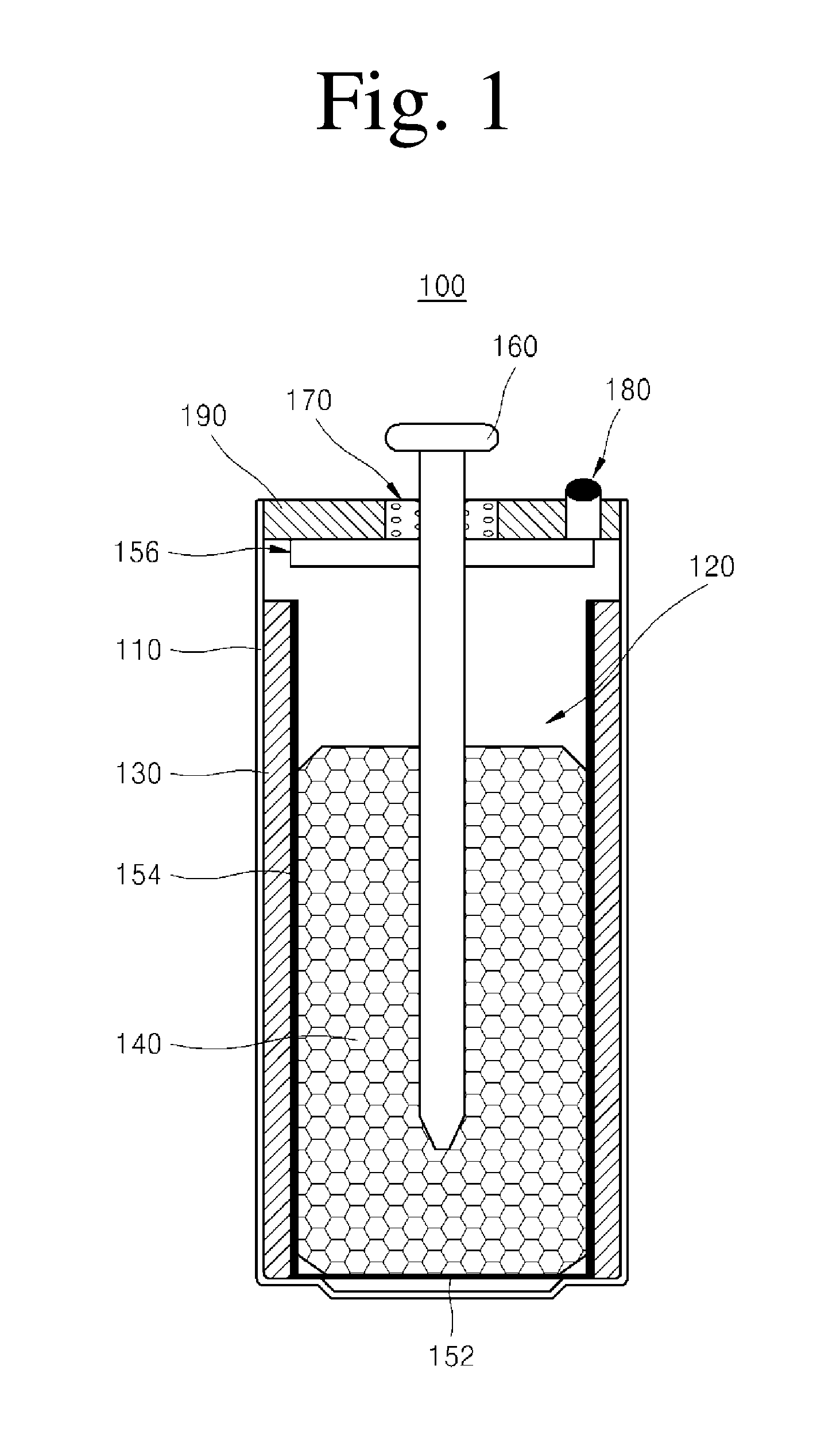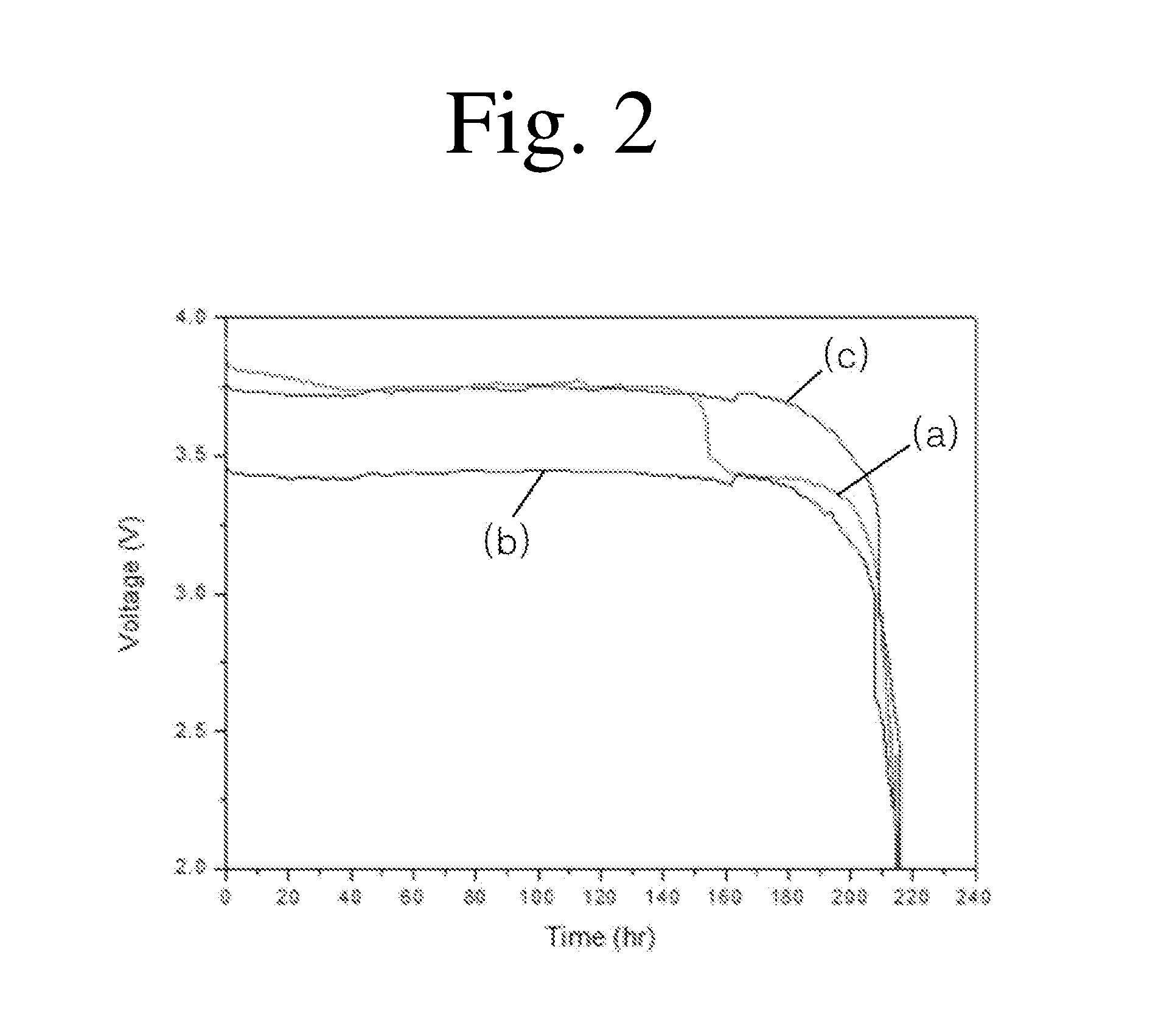Lithium primary battery using composite electrolyte
a composite electrolyte and primary battery technology, applied in the direction of primary cell maintenance/servicing, non-aqueous electrolyte cells, electrolytes, etc., can solve the problems of not checking the remaining capacity of the battery during use, and the time for battery replacement may not be exactly recognized, so as to improve the discharge capacity and reduce the capacity rapid
- Summary
- Abstract
- Description
- Claims
- Application Information
AI Technical Summary
Benefits of technology
Problems solved by technology
Method used
Image
Examples
Embodiment Construction
70% of SO2Cl2 + 30% of1M LiAlCl4SOCl2Comparative Example 1100% of SOCl21M LiAlCl4Comparative Example 2100% of SO2Cl21M LiAlCl4
[0034]2. Evaluation of Discharging Characteristics
[0035]Table 2 shows the results of evaluation of discharging characteristics of the lithium primary batteries according to Example 1 and Comparative Examples 1 and 2. Also, FIG. 2 is a view representing the results of discharging characteristic tests performed on the batteries prepared according to Example 1 and Comparative Examples 1 and 2 under the conditions including 20° C. and a current at an intensity of 1 mA / cm2.
TABLE 2Discharging time20° C.,20° C.,−30° C.,Voltage1 mA / cm25 mA / cm21 mA / cm2characteristicsExample 1212 hours53 hours95 hoursTwo stagevoltageComparative212 hours28 hours85 hoursOne stageExample 1voltageComparative212 hours57 hours64 hoursOne stageExample 2voltage
[0036]Referring to Tables 1 and 2 and FIG. 2, it may be confirmed that the lithium primary battery according to Example 1 using the com...
PUM
| Property | Measurement | Unit |
|---|---|---|
| temperature | aaaaa | aaaaa |
| freezing point | aaaaa | aaaaa |
| temperature | aaaaa | aaaaa |
Abstract
Description
Claims
Application Information
 Login to View More
Login to View More - R&D
- Intellectual Property
- Life Sciences
- Materials
- Tech Scout
- Unparalleled Data Quality
- Higher Quality Content
- 60% Fewer Hallucinations
Browse by: Latest US Patents, China's latest patents, Technical Efficacy Thesaurus, Application Domain, Technology Topic, Popular Technical Reports.
© 2025 PatSnap. All rights reserved.Legal|Privacy policy|Modern Slavery Act Transparency Statement|Sitemap|About US| Contact US: help@patsnap.com



